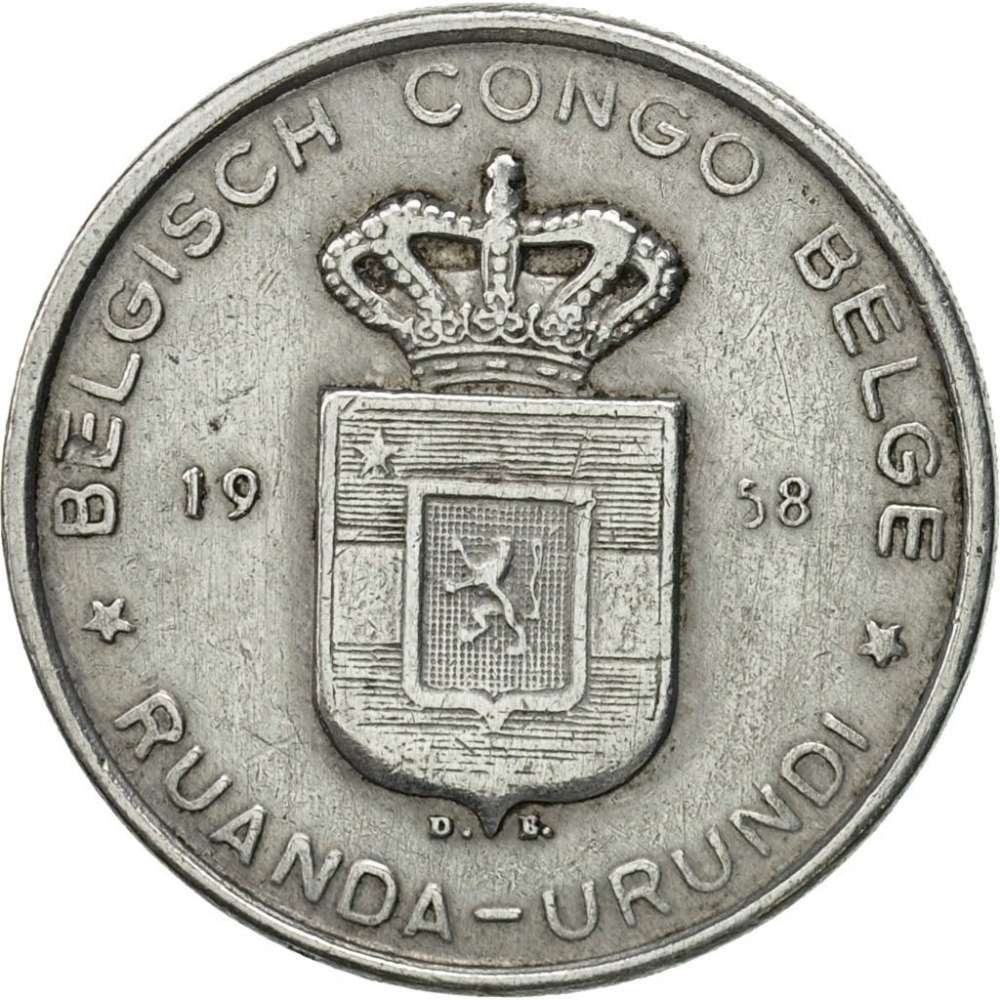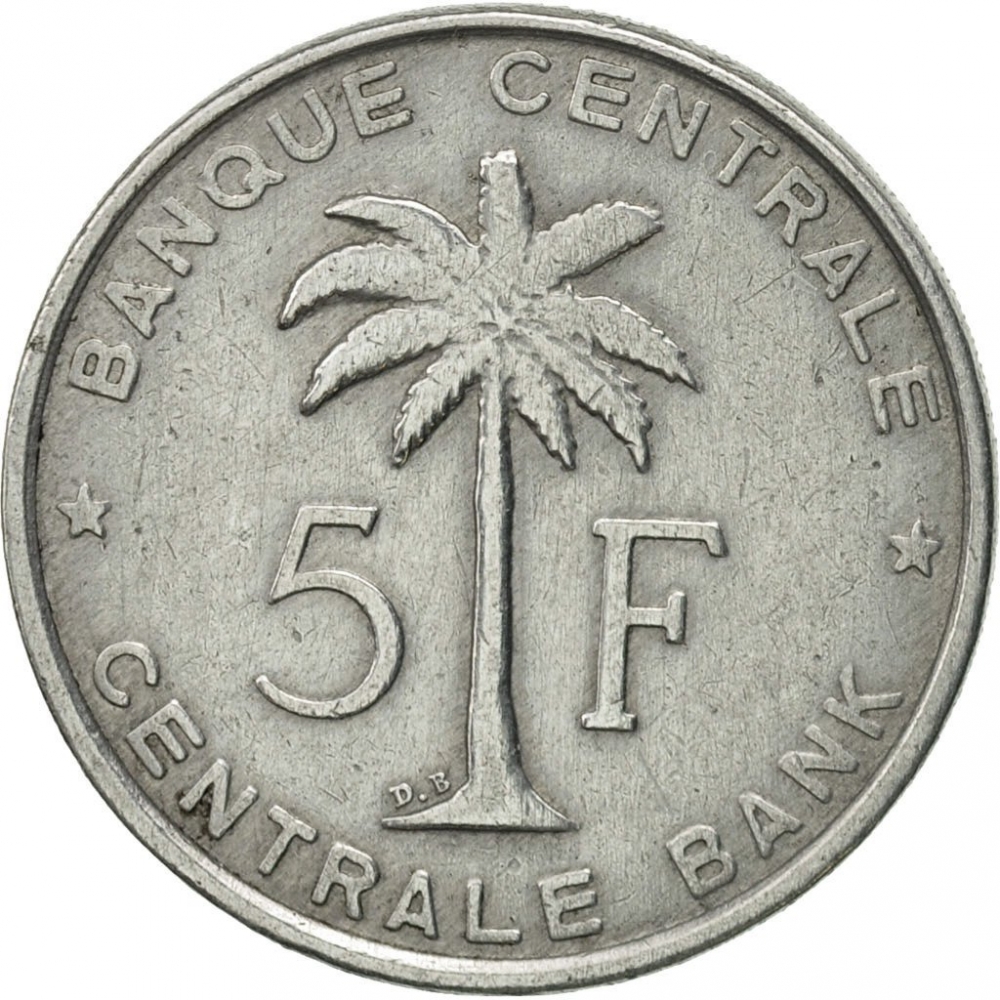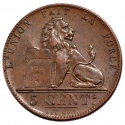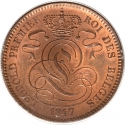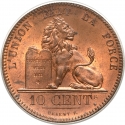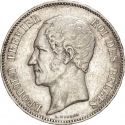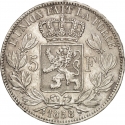You are about to finish your registration. Please check your mailbox (including spam folder). There should be a letter with a confirmation link. Check setting to make sure that your e-mail address is correct.
Send letter againDescription
Ruanda-Urundi was a territory in the African Great Lakes region, once part of German East Africa, which was ruled by Belgium between 1922 and 1962. Occupied by the Belgians during the East African Campaign during World War I, the territory was under Belgian military occupation from 1916 to 1922 and later became a Belgian-controlled Class B Mandate under the League of Nations from 1922 to 1945. After the disestablishment of the League and World War II, Ruanda-Urundi became a Trust Territory of the United Nations, still under Belgian control. In 1962, the mandate became independent as the two separate countries of Rwanda and Burundi.
Engraver: Joseph De Bruyn
Obverse

|
The small crowned arms of the Belgian Congo divide date. BELGISCH CONGO BELGE |
|---|---|
Reverse

|
Oil palm divides denomination. BANQUE CENTRALE |
| Edge |
